Cardboard composting (called ダンボールコンポスト or Danbōrukonposuto in Japan) is a method of composting food waste using cheap cardboard boxes. It can all be done indoors. Cardboard box composting reduces the amount of food waste generated by households and is environmentally friendly.
Making compost? Indoors? In a cardboard box?!?
It sounds wild, to be honest. How does a cardboard box make compost? Wouldn’t the cardboard box immediately get soggy and fall apart? Shouldn’t you do something like this in a plastic tub? What about insects? This sounds like a disaster waiting to happen!
But no. Lots of people have already been using the cardboard box composting method successfully.
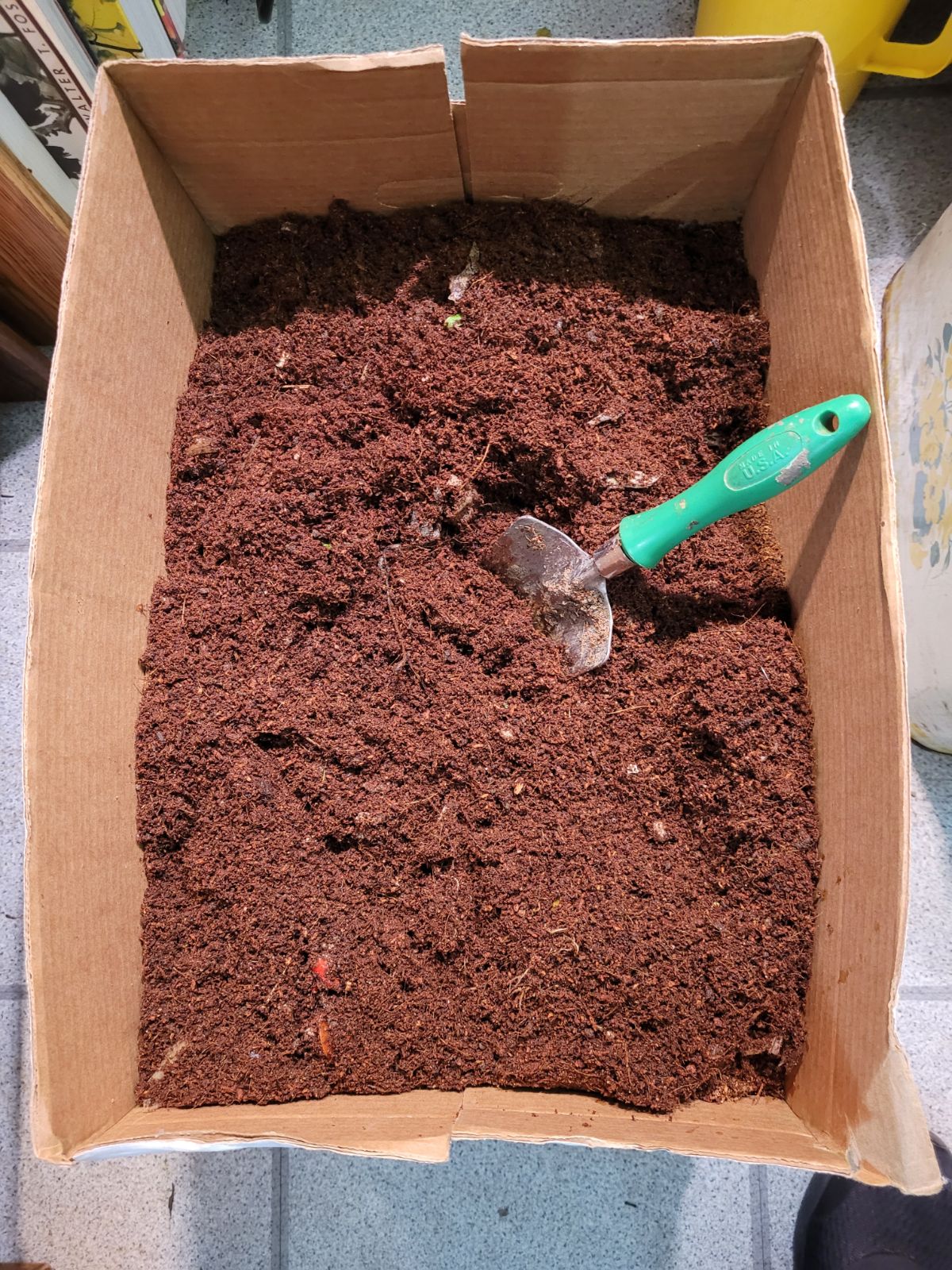
Cardboard box composting has been widely practiced throughout Japan for years. Each prefecture and the major cities have been putting out educational materials about how everybody can do cardboard composting in the house. Indoor composting in cardboard boxes is one of many initiatives that the Japanese government has been doing to reduce trash waste.
Jump to:
- What about odors?
- The Japanese Government Encourages Cardboard Box Composting
- Supplies for Indoor Composting with a Cardboard Box
- How to Make the Cardboard Compost Box
- Making the Base Material for Your Compost
- Peat Moss or Coco Coir
- Rice Hull Charcoal – and Biochar
- How to Use the Cardboard Box Composter
- FAQs About Cardboard Box Compost
- What kinds of food scraps can I add?
- How long does it take for my compost to start working?
- How much water should I add to the cardboard compost?
- How long will a cardboard box compost bin last?
- My compost is starting to smell. What should I do?
- Where can I get coco coir or coco peat?
- When do I know if the compost is ready?
- Help! I have bug larvae in my compost!
- I’ve been adding scraps and stirring the compost daily, but there’s still mold growing on it. How do I stop it?
- My food scraps in the cardboard box compost aren’t breaking down. What should I do?
- Will composted leaves work in place of the peat moss or coco coir?
- Can I use leaf mold and rice bran to make cardboard box compost?
- Where can I get kuntan rice hull charcoal?
- Why can’t I use plastic tape on my box?
- Can I use a laundry bag to make compost?
What about odors?
What’s even more amazing is that an indoor compost box keeps smells out of your apartment. Instead of putting organic waste in your trash, which leads to bad smells, it goes into the compost, which produces a nice earthy scent. The volume of your trash also starts to decrease.
What’s really crazy? This cardboard compost box can handle about 500g (about a pound) of organic material every day!
Still skeptical? Well, I can’t blame you. I was just as skeptical until I dug more into the information. Then I started keeping one at home.
Jump to:
- What about odors?
- The Japanese Government Encourages Cardboard Box Composting
- Supplies for Indoor Composting with a Cardboard Box
- How to Make the Cardboard Compost Box
- Making the Base Material for Your Compost
- Peat Moss or Coco Coir
- Rice Hull Charcoal – and Biochar
- How to Use the Cardboard Box Composter
- FAQs About Cardboard Box Compost
- What kinds of food scraps can I add?
- How long does it take for my compost to start working?
- How much water should I add to the cardboard compost?
- How long will a cardboard box compost bin last?
- My compost is starting to smell. What should I do?
- Where can I get coco coir or coco peat?
- When do I know if the compost is ready?
- Help! I have bug larvae in my compost!
- I’ve been adding scraps and stirring the compost daily, but there’s still mold growing on it. How do I stop it?
- My food scraps in the cardboard box compost aren’t breaking down. What should I do?
- Will composted leaves work in place of the peat moss or coco coir?
- Can I use leaf mold and rice bran to make cardboard box compost?
- Where can I get kuntan rice hull charcoal?
- Why can’t I use plastic tape on my box?
- Can I use a laundry bag to make compost?
The Japanese Government Encourages Cardboard Box Composting
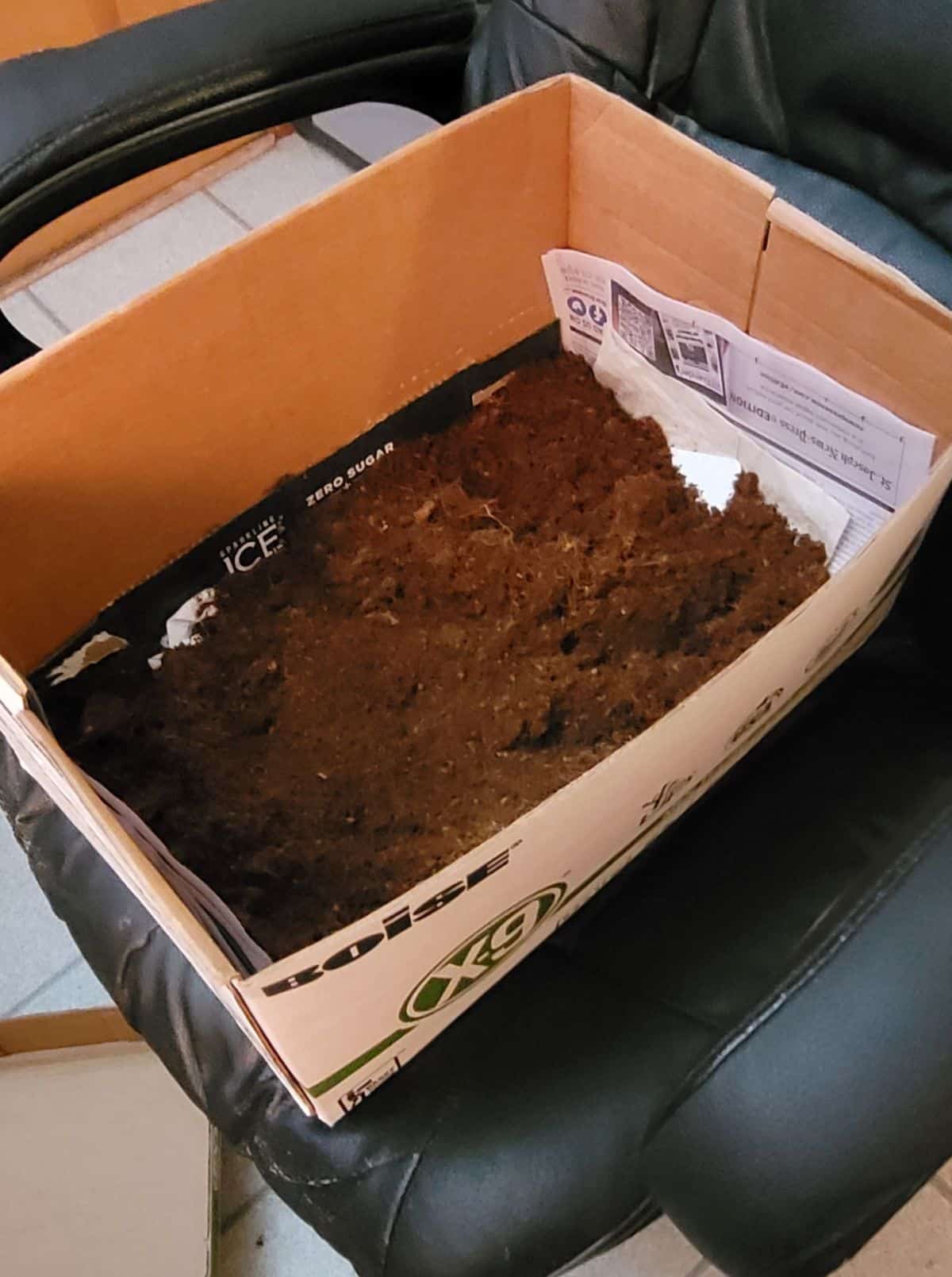
I started my own cardboard box composter some time ago, but it didn’t seem to be doing anything after the first week, so I impatiently dumped it into the garden.
Then I started looking for more information, and now I wish I’d kept the box going! So I started a second one – and I’m sticking with it.
Cardboard composting is mostly unknown in the United States and other parts of the world. So to learn more about this process, I turned to videos from Japan.
Every prefecture in Japan, as well as their major cities, gives detailed instructions about box composting via social media. They have a national initiative to reduce household waste across the nation, and this is one of the ways they do it.
I don’t speak Japanese or read kanji, and none of the videos had an English translation – so I ran the transcript through Google Translate and then used it to follow along in the video!
I also read through blogs from government officials, as well as regular folks, about indoor composting, using translation services to read the pages. This has been extraordinarily helpful in giving me additional information that isn’t common in other parts of the world (and it’s a fun rabbit hole online to fall into).
Supplies for Indoor Composting with a Cardboard Box
- Cardboard box (a paper box is good) 45 cm by 30 cm.
- An extra piece of cardboard and some newspapers to reinforce the bottom
- Something to keep the box off the floor (blocks, seedling flats, etc.)
- Peat moss, coco coir, or leaf mold (15L or 4 gallons)
- Rice husk charcoal, biochar, or horticultural charcoal (10L or 2.5 gallons)
- Scoop or trowel to stir materials
- A piece of cloth that completely covers the box to keep insects out but lets oxygen in – such as a large tea towel, an old T-shirt, etc.
- Paper tape to seal the edges
How to Make the Cardboard Compost Box
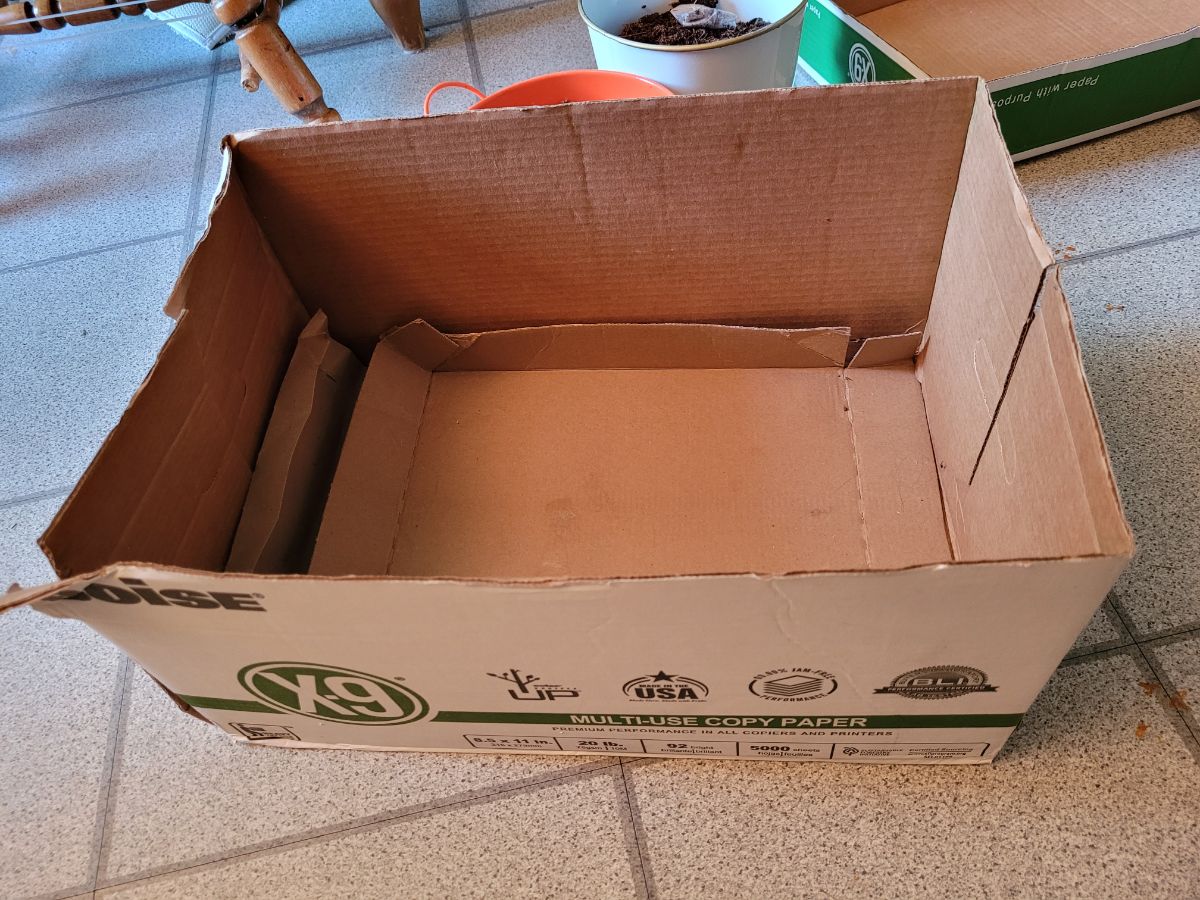
- Remove any plastic tape from the box because moisture will gather underneath this tape and could ruin the box.
- Use paper tape to stand up the folding tops of the box to make the box taller. Use paper tape to close any gaps on the bottom and sides of the box. This keeps out insects that might get into your compost and lay eggs.
- Put a sturdy piece of cardboard at the bottom of the box to catch seepage. Lay some newspapers over it or add shredded paper to the bottom of the box.
- When you’re not using it, keep the cardboard box tightly covered with a cloth of some sort, such as a large tea towel, or part of a sheet, or an old T-shirt. You can also make a lid from a cardboard box and punch it full of holes.
- The underside of the box is not neglected, either. The cardboard box must be raised off the floor with wooden blocks to let the air circulate underneath it. You can also use slats or a flat plastic basket. If the box sits directly on the floor, it will get wet and ruined immediately.
The point of all these seemingly odd materials – the cloth, the cardboard box, the paper tape – is to allow the compost to breathe. The compost must have oxygen to work so it doesn’t start to smell.
Making the Base Material for Your Compost
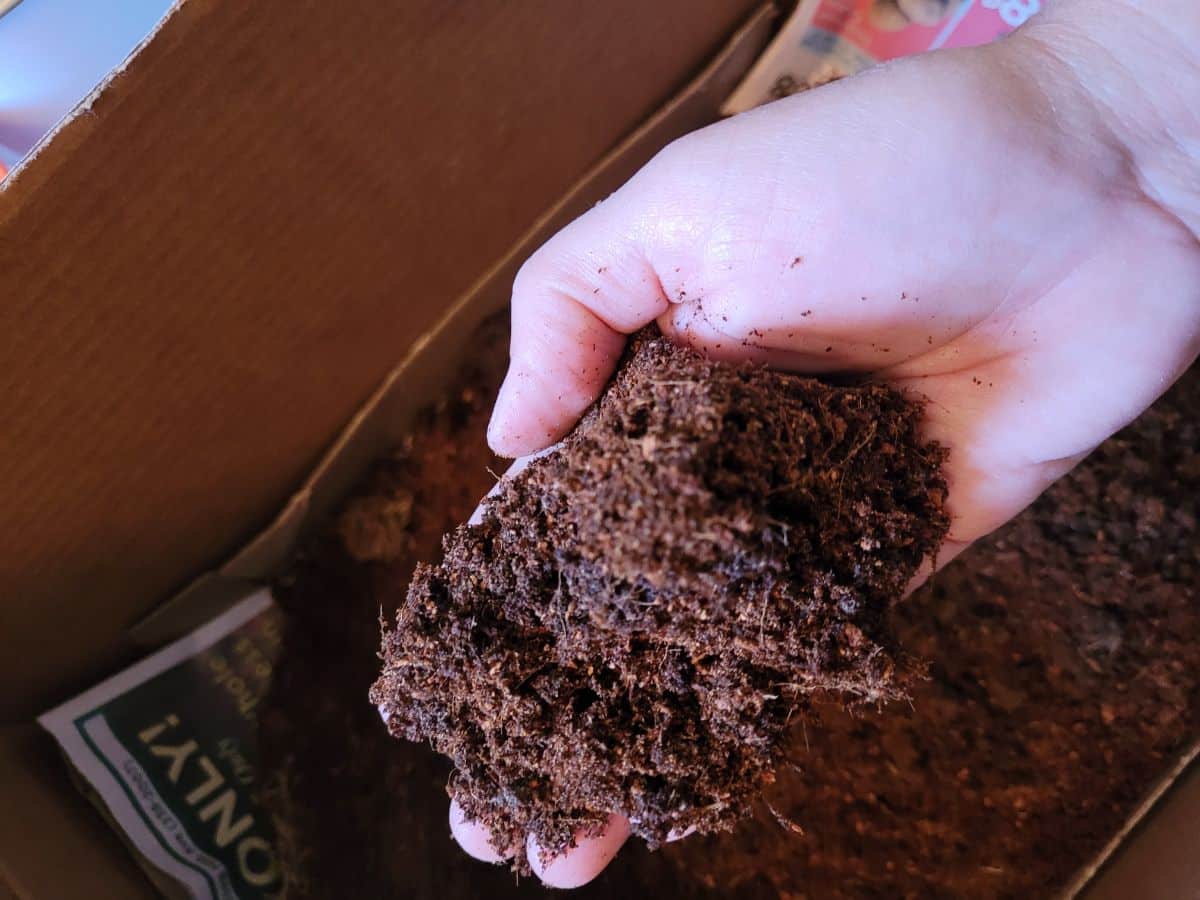
Now we’ll add the two main ingredients to your cardboard box compost bin. The first ingredient will be a light, fluffy “soil,” such as coco coir or peat moss. The second consists of a form of horticultural charcoal – rice hull charcoal or biochar – to encourage decomposition and keep the “soil” smelling sweet.
Peat Moss or Coco Coir
This will make up the bulk of your box that you’ll bury your food waste in. It holds moisture and microorganisms and is a good all-purpose filler and soil amendment.
Peat moss is available at garden centers, while coco coir “bricks” can be found at pet stores. These are used in reptile habitats to make a soft kind of floor they can burrow in.
Soak the coco coir bricks in water so they expand. They quickly absorb water (unlike peat moss), so it won’t take long.
Peat moss will also need to have water added to it because it’s generally bone-dry when you open the package. Hydrating the peat moss will take much longer because it resists water.
Add just enough water to moisten these materials. If they’re dripping, they’re too wet!
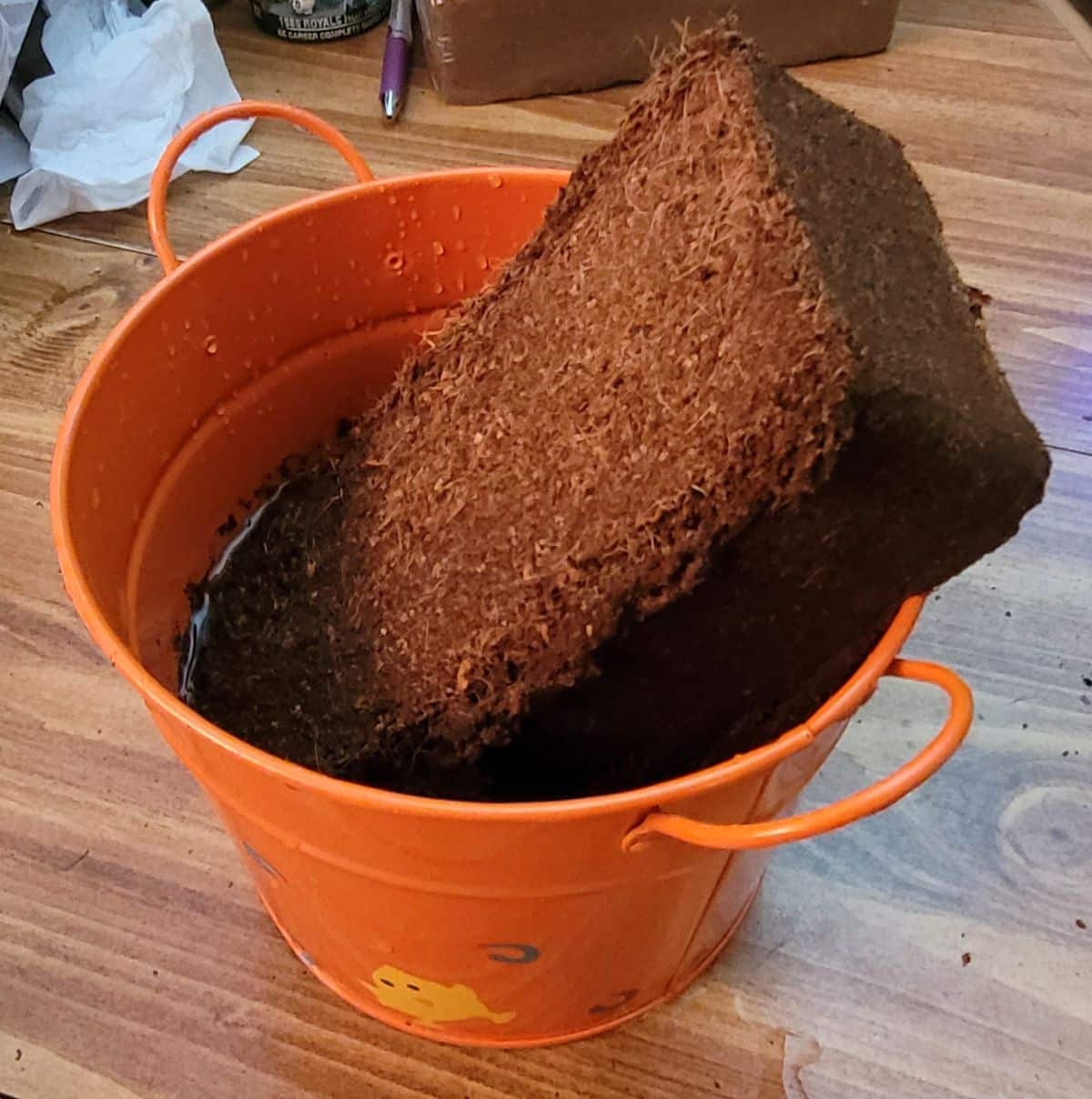
Rice Hull Charcoal – and Biochar
Rice hull charcoal – a form of charcoal made from the hulls of rice grains – is widely used in Japan for cardboard compost, so it shows up in nearly every translated recipe for cardboard compost.
However, rice hull charcoal is very hard to find in other areas.
As a result (and possibly due to a mistranslation somewhere along the way), ash is often substituted for charcoal.
However, ash is not as effective. Ash has had all the good stuff burned away, leaving only a highly alkaline substance.
Charcoal has been burned in a way that preserves its carbon and minerals.
Your best bet if you can’t obtain rice hull charcoal? Using some form of biochar or horticultural charcoal.
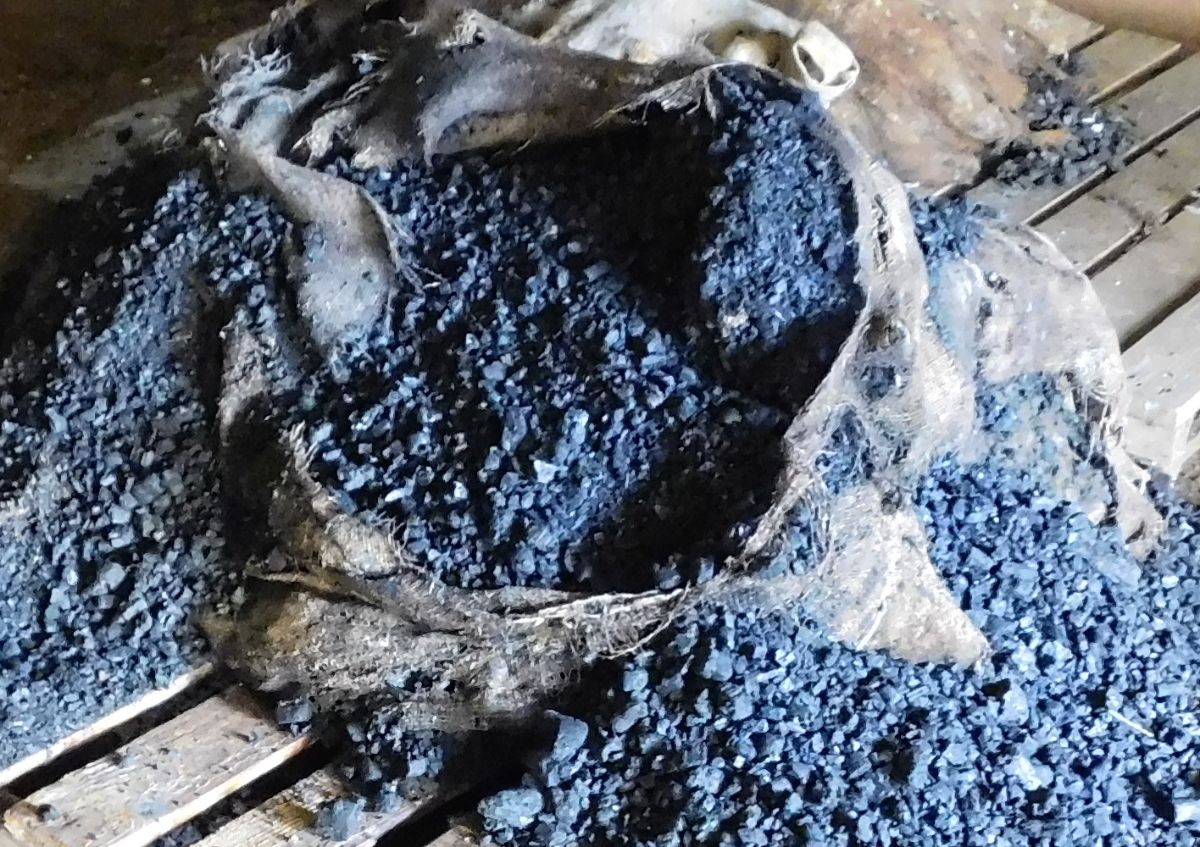
Biochar consists of about 90% carbon and 10% oxygen and holds nutrients so they don’t wash away in the soil. Its carbon content is extremely stable.
But its biggest selling points?
1) It helps activate microorganisms, and
2) Biochar absorbs odors, keeping your compost fresh and smelling good.
You definitely want those qualities in an indoor composting bin!
Try to find small-grained charcoal, if possible, so you don’t have big chunks of biochar sticking out everywhere.
How to Use the Cardboard Box Composter
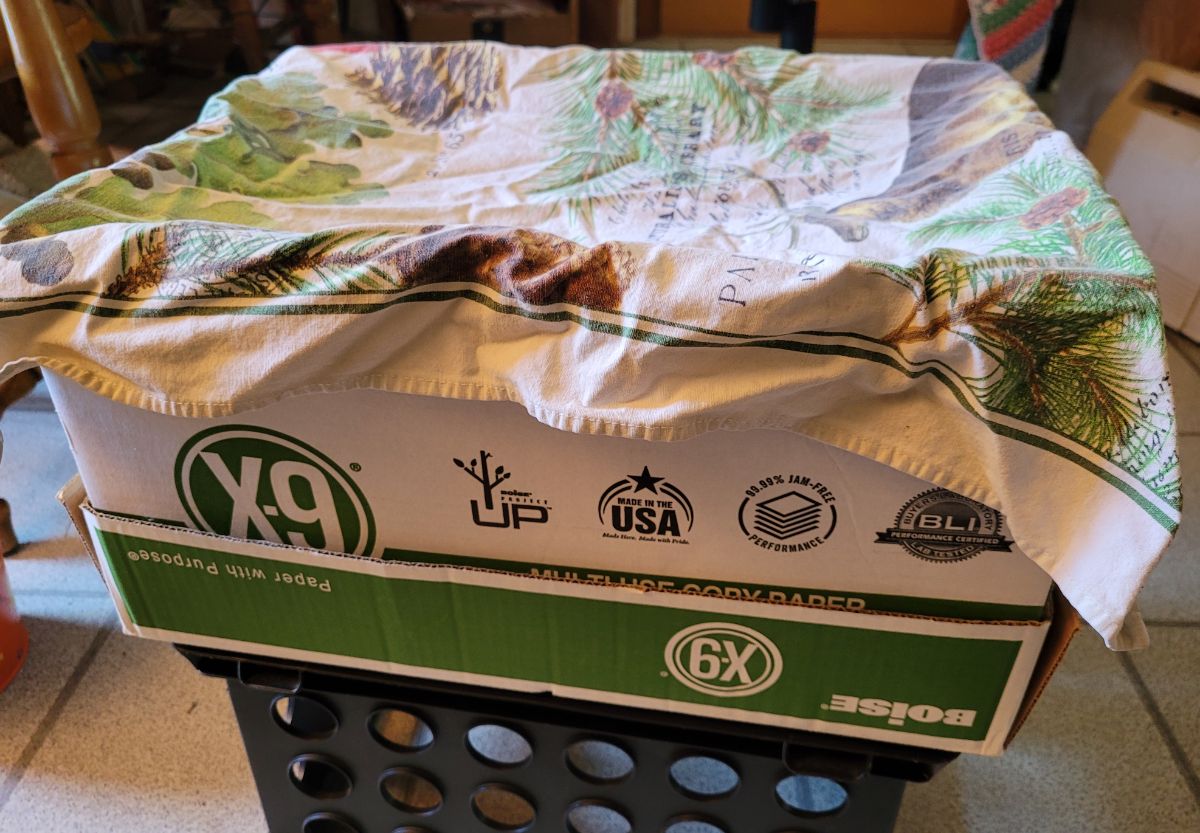
Once your peat variant is moistened, mix in the charcoal. You can put them in a bag to mix them or mix them in the box. If dust is rising up as you mix them, spritz them with water.
A 3:2 ratio of peat to charcoal works well. By adding 3 parts of peat moss to 2 parts of charcoal, you’re creating the perfect environment for microorganisms to ferment and decompose food waste, so the compost smells fresh and good.
The finished base material should fill about ⅔ of the cardboard box.
Every day, when you have food scraps, dig a hole in the middle of the compost, drop your food scraps in, and then stir the compost with the trowel. This adds air, which encourages the microorganisms to break down the food scraps.
Even if you don’t add anything, stir the compost daily to keep it aerated, which keeps the microorganisms alert and busy.
Write the date you started your compost on top of your box so you know how long it’s been working.
If you carefully use the container, it can last for years. No kidding!
FAQs About Cardboard Box Compost
Cardboard box compost is perfect for those living in apartments who have no option for outdoor composting. It's also great for anyone looking for a fast, at-hand way to compost kitchen waste and people interested in cutting out landfill waste.
By using the cardboard boxes you have at home, you can turn food waste that would otherwise be thrown away into compost!
Now that I’ve done the research, I’ve started my own indoor composting box – doing it right this time! – to make compost to put on my garden and add to my own soil-building efforts.
Scrolling through various forums, I’ve run across a few recurring questions about cardboard box compost.
Here are a few answers.
What kinds of food scraps can I add?

The cardboard box composter can handle most any vegetable and fruit scraps, just as long as they’re chopped into small pieces to accelerate their breakdown. You can’t drop a whole carrot in there and expect it to compost quickly. Tougher parts like banana and avocado peels will break down if they’re cut up.
Meat, if chopped up, can be composted, but only in small amounts. This composting cardboard box can handle a little pile of thin bones, like fish or skinnier chicken bones, but nothing bigger. You can also compost small amounts of milk products. Use caution with these, naturally, because you don’t want a buildup of odors.
I use a handheld food chopper that will handle about a cup of food scraps. I put them in, chunk them up, add them to the compost, then rinse out the cup and dump that into the compost as well.
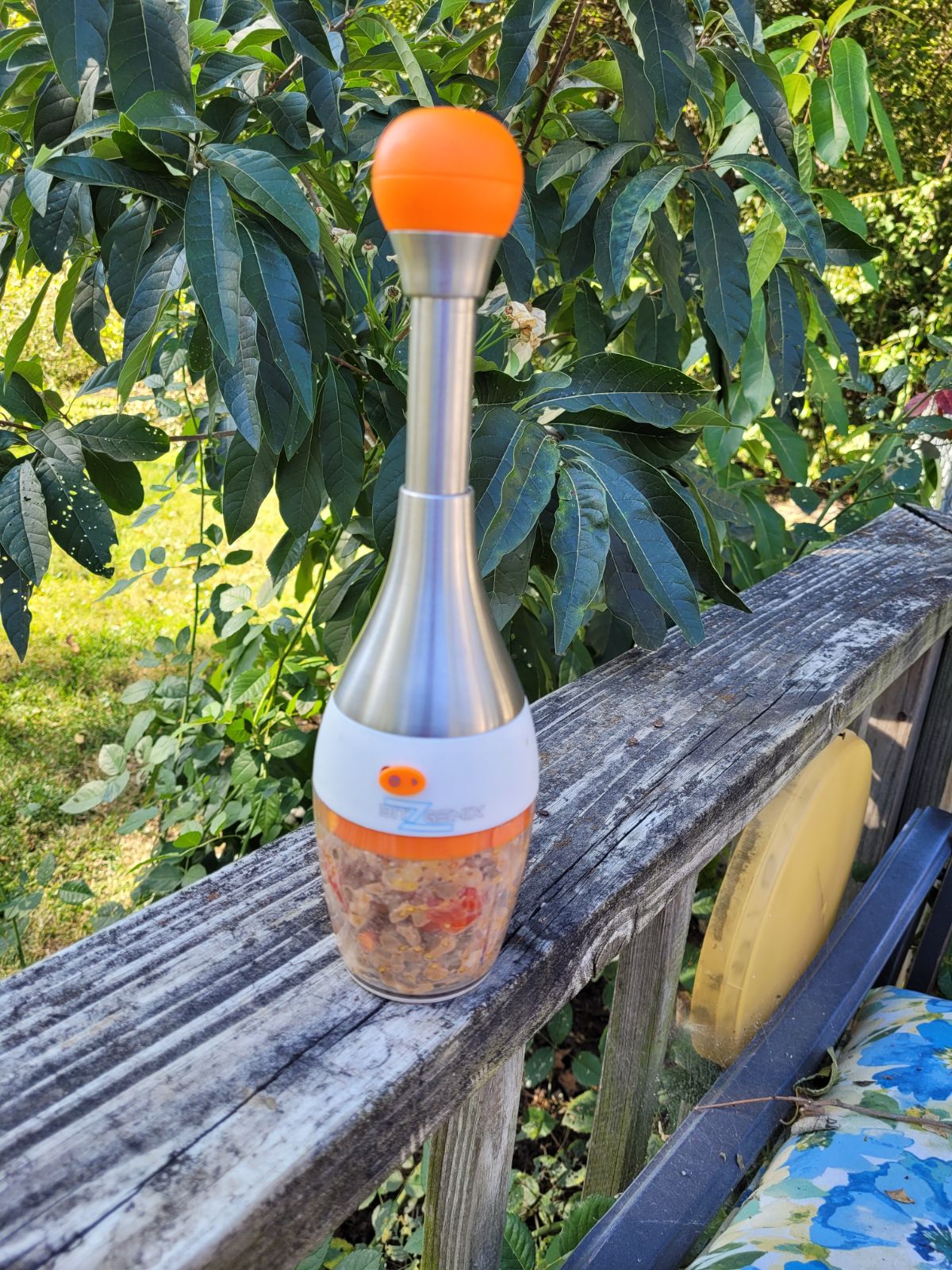
Avoid large amounts of salted products. Don’t compost shells due to the strong odors they will have, and it will take too long for them to break down.
Shake the water off the food scraps before you add them. Add fresh scraps. You can add some rotten or old food occasionally – but not much, so the compost stays fresh.
Pro Tip: Some people keep a container or a ziplock bag in the freezer where they toss a few scraps daily, then add it to the indoor compost box in frozen batches. This helps it to break down a little more quickly and keeps food odors down.

How long does it take for my compost to start working?
The composting process in your cardboard box won’t start immediately. It will take a week or two for the microbes to multiply enough to start breaking down food.
Some sources recommend not adding any food for the first week to give the microorganisms time to populate the compost box. Instead, stir the base material daily. Put a compost thermometer into the compost and watch it. When the temperature starts going up, then your compost microorganisms are ready for food!
Soon, your compost will start reaching temperatures of up to 40 degrees C (100 degrees F). It can get hotter if you keep it outside on your balcony during the summer.

Once the microorganisms start working, you’ll feel warmth rising from the compost, as if it’s a new pet. In summer, you might even see steam rising from it.
The higher the temperature of your cardboard box compost, the more waste that’s breaking down into soil. Stick a compost thermometer into the soil to see how hot the microbes are making things.
If your compost is still sluggish after a few weeks, try adding some compost conditioner to it to kick the microbes into gear. Coffee grounds will jump-start your compost, or bokashi bran, or a little more biochar. Stirring in a little fermented food such as yogurt, cole slaw, kombucha, or sauerkraut can also help – but not too much.
How much water should I add to the cardboard compost?
When you first make the compost, err on the side of dryness. If your food scraps are dripping, squeeze the water out of them. Compost that’s too wet can grow mold and start smelling.
If the compost gets too wet, add “brown” materials like torn-up paper towels, old paper napkins, or shredded cardboard or paper to absorb the water.
Once you get comfortable with what the compost expects, gradually add water. The coco coir and biochar can hold a surprising amount of moisture, which is another reason why these materials work so well in a cardboard box.
To check the moisture level, occasionally squeeze your compost into a ball. If you have enough water, the materials will stick together for a moment before they fall apart.
If the compost looks dry, spray it with water (or mix a little in). Some composters keep a spray bottle nearby for this.
How long will a cardboard box compost bin last?
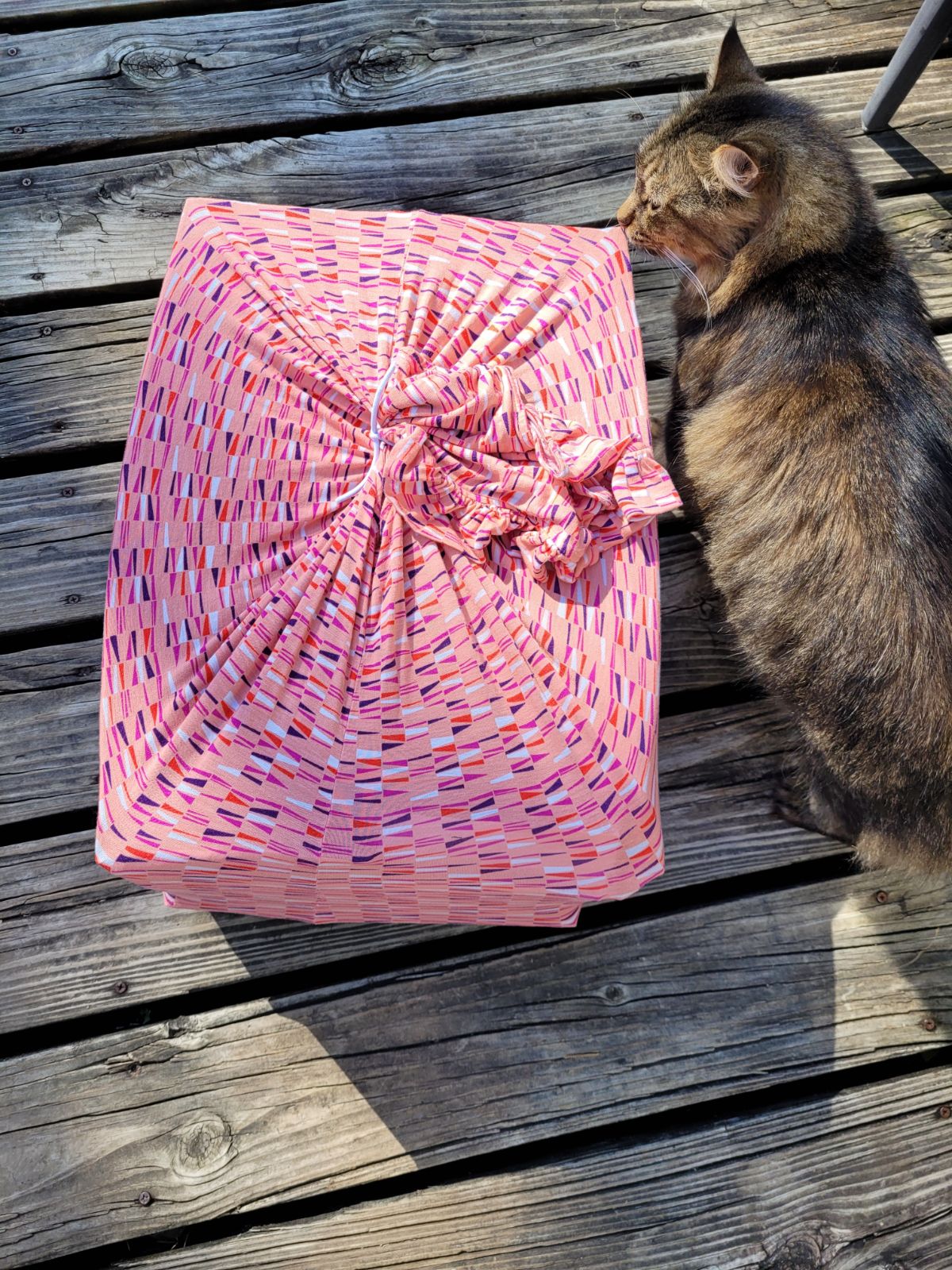
As long as you want it, too, to be honest. If you’re careful not to get the compost too wet, your box should last for years.
It will absorb pounds and pounds of food scraps without seeming to gain much mass.
If your cardboard compost box starts getting too full, sift out the finished compost and put it in your garden, and put the unfinished food scraps back in. Repeat as often as you need the compost.
Add a handful to houseplants every other month. Add it to the potting soil in your planters. Spread it around some street trees that could really use some love.
Outdoor gardeners have several compost heaps outdoors, with less finished compost on one end and finished compost on the other. You can also set the box aside and let the materials break down into a finished form.
Once you stop adding organic material to the compost, it takes about two to three months to turn into great soil. In the meantime, start a new box to make more compost.
My compost is starting to smell. What should I do?
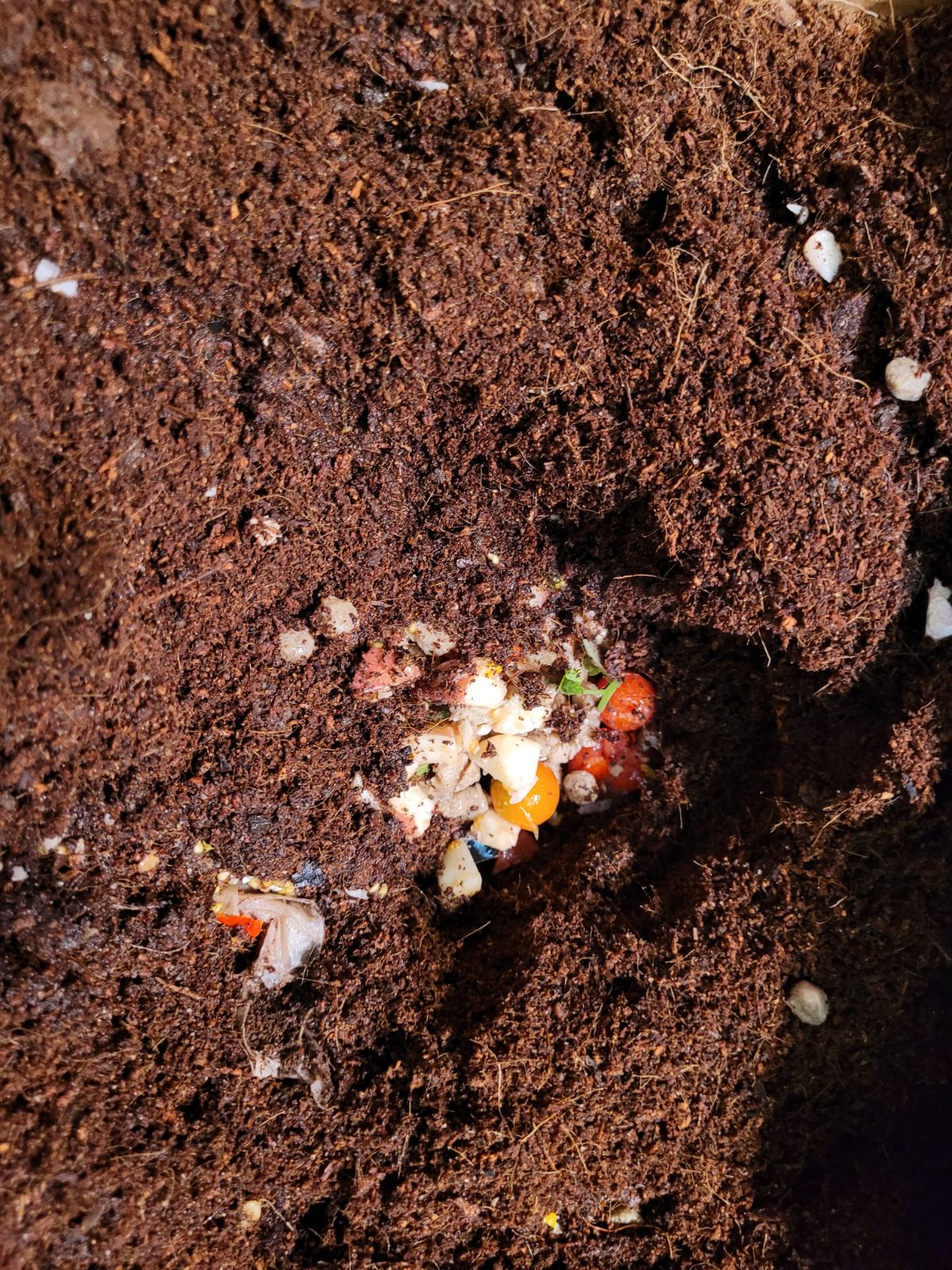
It’s possibly because you’ve added too much water, or perhaps there’s food in there that’s stinking up the place. Here are a few ways to bring down the smell.
- Add “brown,” absorbent materials like shredded cardboard and paper, shredded paper towels, used Kleenexes, and newspapers to the compost box.
- Add more charcoal – rice hull charcoal or biochar – to help neutralize odors.
- Stop adding food to the compost for a little while until the compost rights itself.
- Turn a fan on the cardboard compost box to get rid of excess moisture.
- Stir the compost often.
- Find whatever food is causing the issue and get it out of there.
- Start freezing your food scraps before adding them to the pile.
Where can I get coco coir or coco peat?
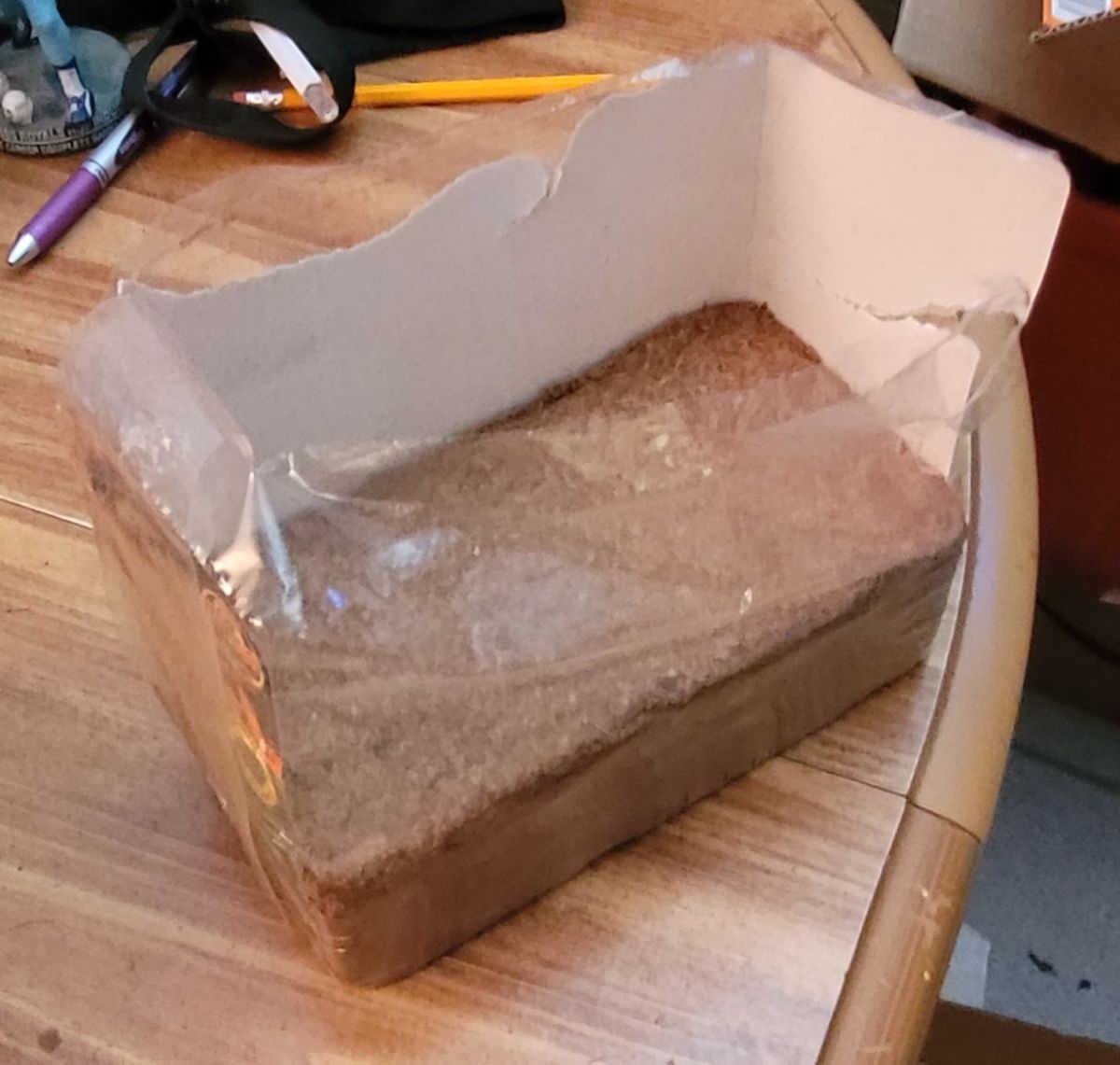
I went all over town and looked for it at the local nurseries and big box stores, but nobody had it. Then I found some at the local pet store! They sell coco coir bricks in the reptile section because it’s used as substrate in reptile habitats.
You can also buy it online.
When do I know if the compost is ready?
Good compost will create black soil. It will have an earthy odor, though it can also have a slight moldy smell. You won’t see any of the food scraps in the compost because they’re all broken down.
Help! I have bug larvae in my compost!
Fungus gnats start out as tiny white larvae that wriggle around in the soil before they metamorphose into tiny, annoying gnats. You might also have different maggots, depending on what kinds of flies get into your compost.
Technically, these tiny white larvae will help break down your compostables. And that’s fine … until the gnats hatch and start flying around your house or drown in your morning coffee.
One way to kill off the fly larvae is by putting the box into a black trash bag and letting it sit outside in the hot sun all day. The heat will kill off the insects. If it’s winter, then simply set the box outside in the cold to kill them off.
Most maggots are fly larvae. Put a mosquito dunk that contains Bacillus thuringiensis, or B.T., into a watering can, let it soak, then use this water to moisten the compost every couple of days. Dunks target mosquito larvae – and all other members of the fly family and their larvae. Watering the compost with this will slowly kill off the larvae.
Also, put a yellow sticky trap just above the soil to catch any flies that hatch and try to fly out. Using both tactics at the same time should put an end to all that insect nonsense.
From now on, be sure to keep the box tightly covered with some kind of cloth or a cardboard lid with holes punched in it. Don’t leave any gaps for insects to get in.
I’ve been adding scraps and stirring the compost daily, but there’s still mold growing on it. How do I stop it?
Mold can be a valuable part of the composting process in small amounts, but it’s best to keep too much of it at bay for best results. Use less water in the box. Squeeze water out of the food scraps you’re composting.
Go heavy on the browns. Add shredded paper, used Kleenex, and torn-up egg cartons if you have a moisture problem. Make sure air can circulate around the cardboard box – front, back, sides, top, and bottom. Use cloth or cardboard to cover the box, not plastic. And stir the compost daily to break up the mold and get air into the compost.
My food scraps in the cardboard box compost aren’t breaking down. What should I do?
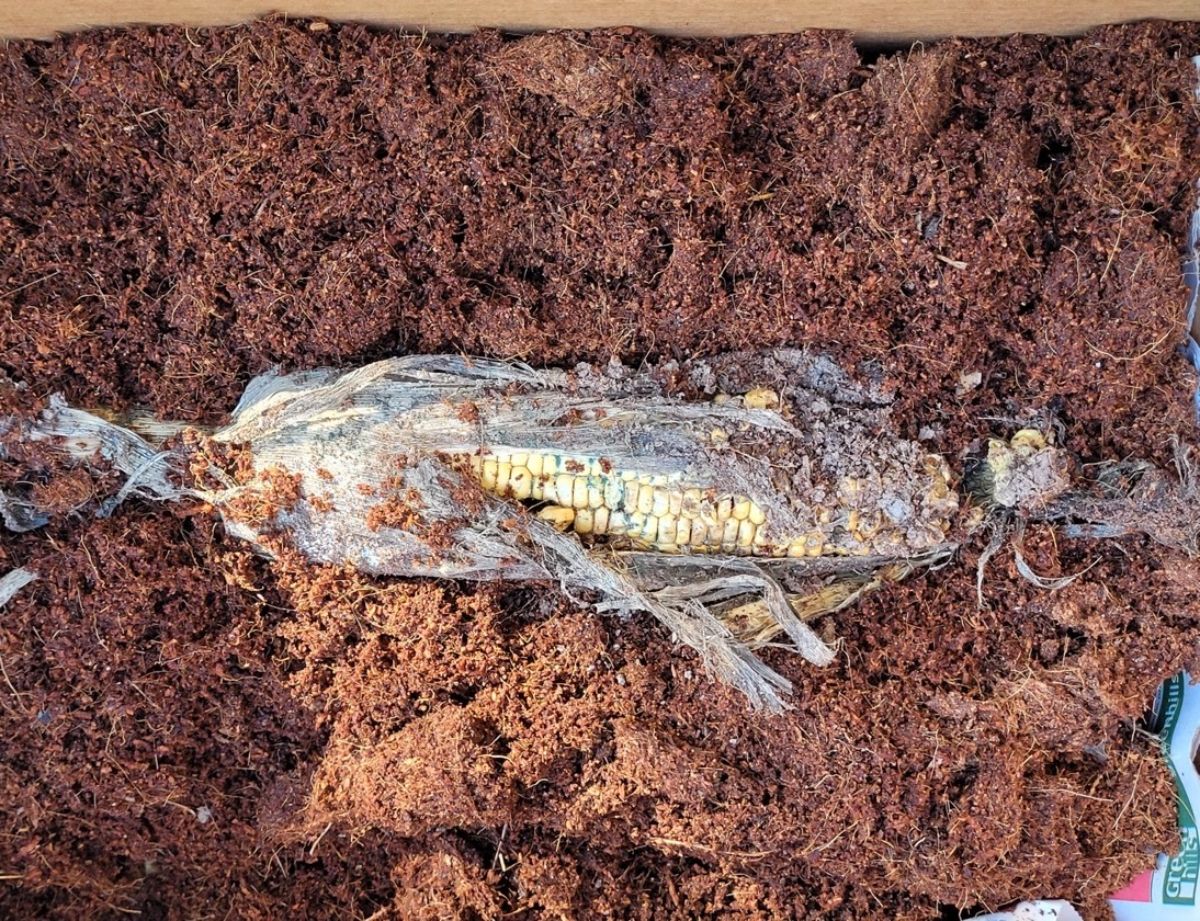
First, make sure you’re chopping up your compostable materials into small pieces so they can break down more easily.
Add rice bran or coffee grounds to jump-start the composting because they promote fermentation. Adding proteins, sugars, or used oil (such as a bit of cooking oil) to the box will help get the microorganisms moving.
Though it’s not recommended to add oil to outdoor compost bins, people in Japan will add a little used tempura oil to accelerate the breakdown of organic materials. Not a whole lot, though. A little dab’ll do ya.
Add fermented materials, too. Leftover miso soup is great, along with yogurt.
Add leftover beer or wine to the cardboard box compost. And you can give it your leftover old beer without having to worry about the compost drunk-texting you at 3 a.m.
Will composted leaves work in place of the peat moss or coco coir?
Yes. Leaf mold is sold as mulch in Japan and can be used in a compost box. They also add valuable microorganisms and nutrients into the mix.
Can I use leaf mold and rice bran to make cardboard box compost?
Leafmold is sold in Japan as mulch, but it can also be gotten anywhere else. Leafmold consists of old leaves that are breaking down into rich black soil. You can gather it from the forest floor, but a more sustainable way would be to make your own.
Chop up fallen leaves with a chipper or a mulching mower, then pile them up in a heap outdoors to slowly break down over the winter and into the next year. Boom, eventually, you have leafmold!
Rice bran is a popular soil conditioner in Japan – and now it’s popular here for bokashi. Rice bran improves the composting process because it contains essential materials for microbe metabolism. It retains moisture, raises the nitrogen of the finished product, and improves soil structure.
Use a 3:2 mix of leaf mold to rice bran. If you have a large cardboard box, you can add 6 kg of leaf mold to 4 kg of rice bran.
If you already have rice bran in the house to make bokashi, add a few handfuls of rice bran to your cardboard compost box, along with the mostly-broken-down scraps (chopped up) from your bokashi bin so they can finish breaking down.
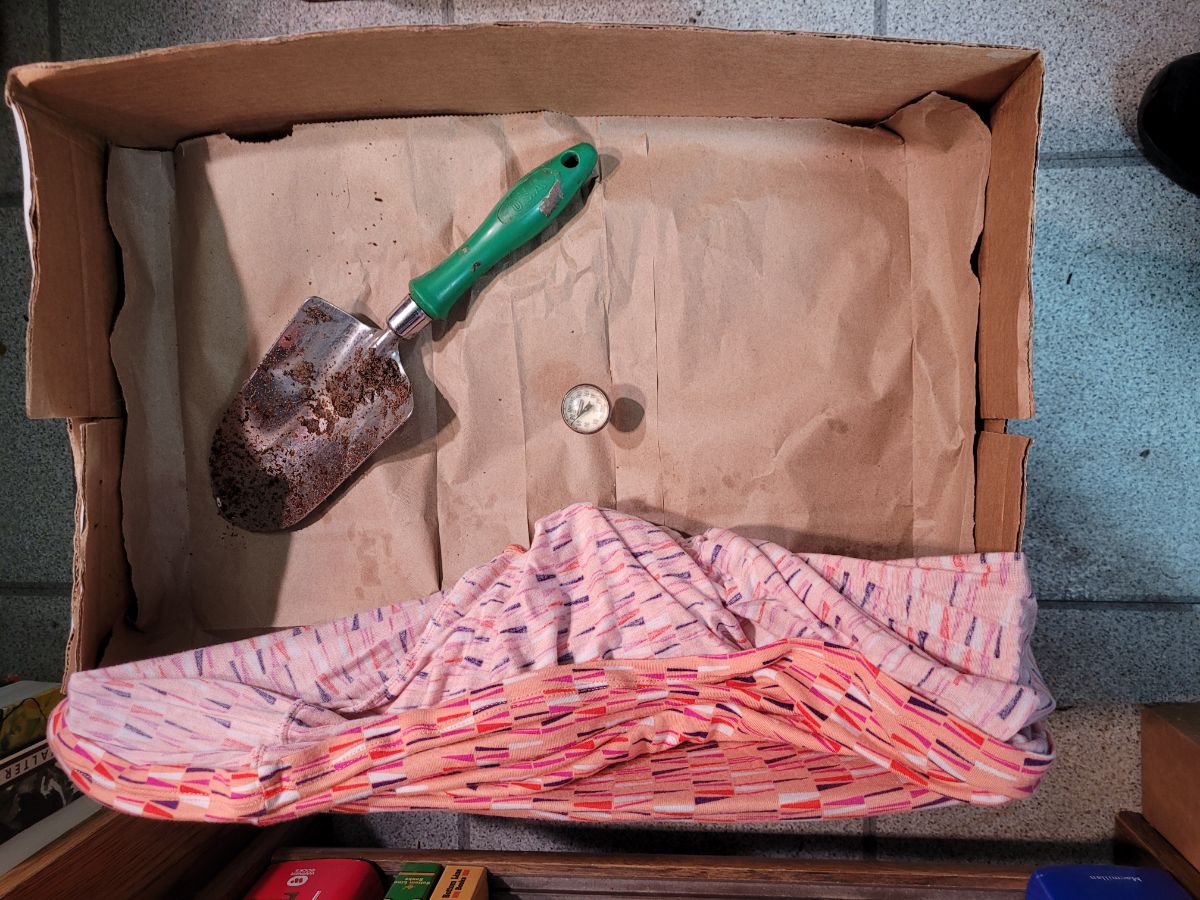
Where can I get kuntan rice hull charcoal?
Kuntan rice husk charcoal still seems to be the most foolproof material for the compost – or at least the most tested. It’s a good soil additive that will help make your garden soil light and fluffy.
Buy it online, though you might have to get it from overseas.
I ordered rice hull charcoal and then discovered it was coming in from Sri Lanka, which I didn’t realize until after. Oh well, it’s always good to support small businesses wherever they happen to be located!
Why can’t I use plastic tape on my box?
Plastic tape will trap moisture in your cardboard box. But you need tape to reinforce the sides and make the flaps of the box stand up to give your box more volume and keep insects out.
So you have to remove any old tape that’s on the box, then replace it with paper tape, and use paper tape to secure the sides.
Can I use a laundry bag to make compost?
Why, yes! If you have a large box, a zippable laundry bag can help you tumble your compost easily.
Open the laundry bag and clip it open to the top of your cardboard composter box so you can fill it. Pour in your peat and charcoal. Then unclip the laundry bag, zip it up, and tumble it around to mix the base ingredients well. Then, pour in some water and mix it in until the peat and charcoal.
Add food scraps and other compostable materials daily, cut small. Turn the laundry bag a few times to mix everything well, then cover it with an old T-shirt, a towel, or a small blanket, and treat it the same way you treat the other compost.

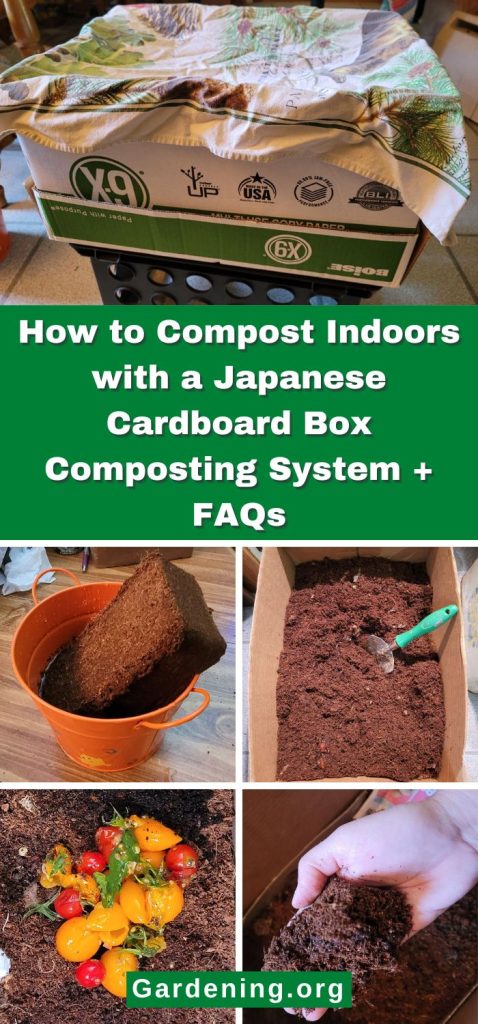
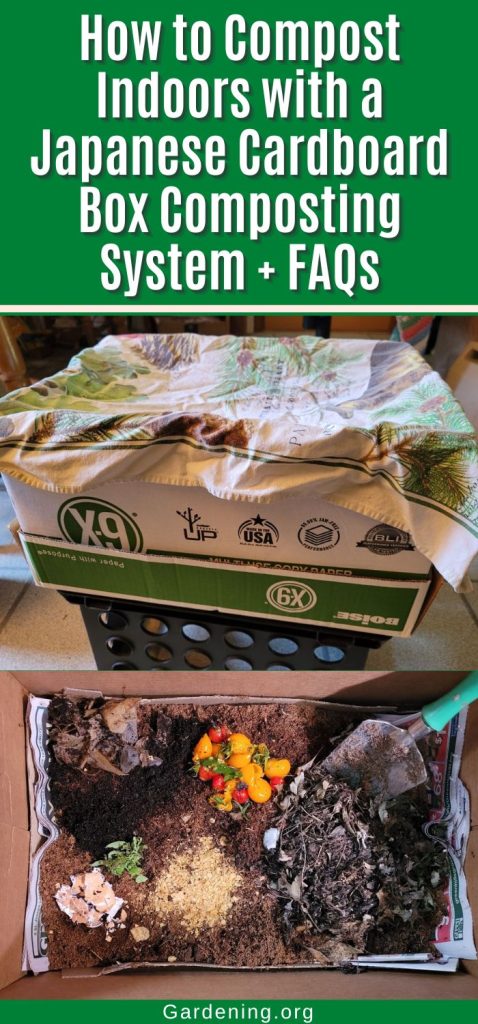
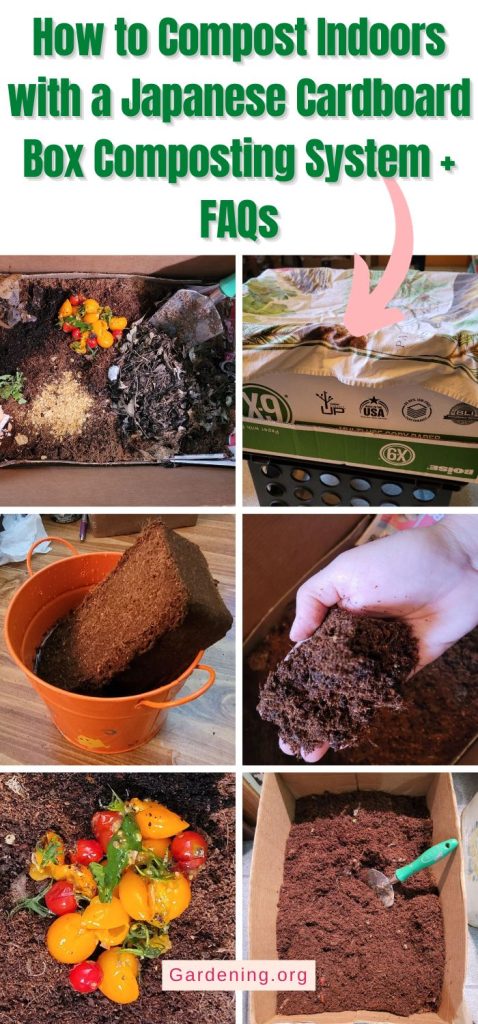
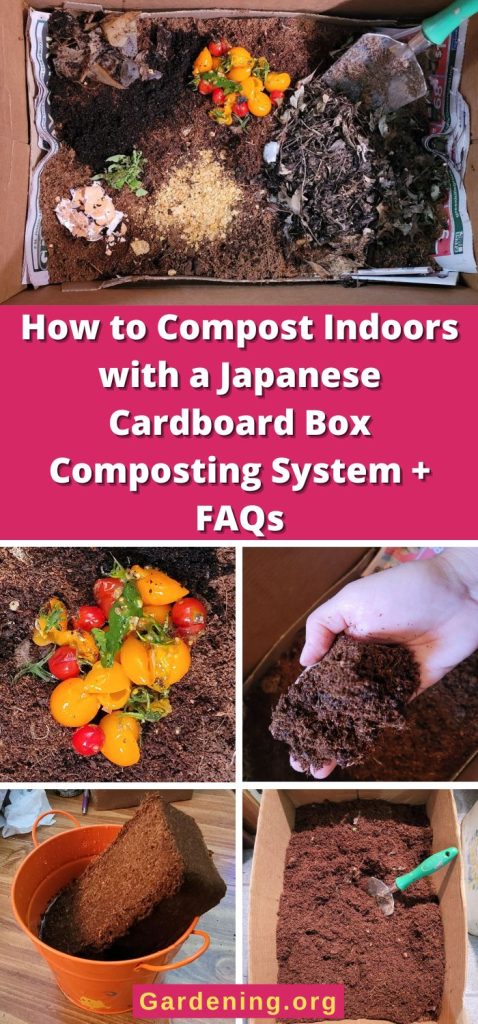
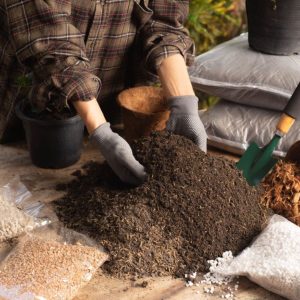
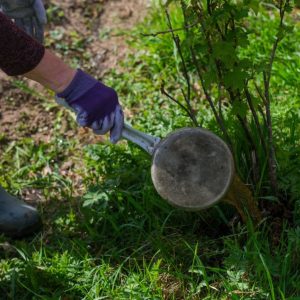
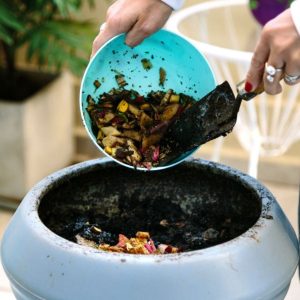
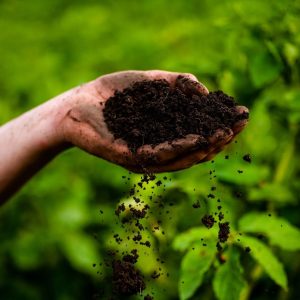
Mary.Coakley
Sounds ideal
Rosefiend
Thanks! It's pretty cool to play with!
Juanita
Seems expensive compared to other composting methods. Surely there are home-grown alternatives to buying coco coir and biochar.
Rosefiend
Not too expensive. Three bricks of compressed coco coir cost $7.99 at the pet store. A 1.5 quart bag of biochar at the local farm store costs $4.99.
However! If there's an old bag of peat moss lying around, use that instead of coco coir. Leafmold from local forests, or composted fall leaves that have mostly broken down into soil, is also a good alternative.
If you do bokashi composting, get a generous scoop of rice bran and sprinkle that into the cardboard composter in place of the charcoal.
J. Entwistle
Thank you so much for this article. I have used compost pickup services for years after leaving my suburban home where I had a huge bin and a large supply of leaves. My buckets keep getting stolen from my current apt. complex, so I have been searching for a way to compost in my apartment - worms are too picky! I just ordered a countertop appliance for $149, which I may use to chop everything, then put into this box. Right now my freezer is half full of scraps, am heading out to the pet store for coco coir. Will let you know how this goes, and hope to share this with my friends.
Mary Ward
That's great! we look forward to your updates!